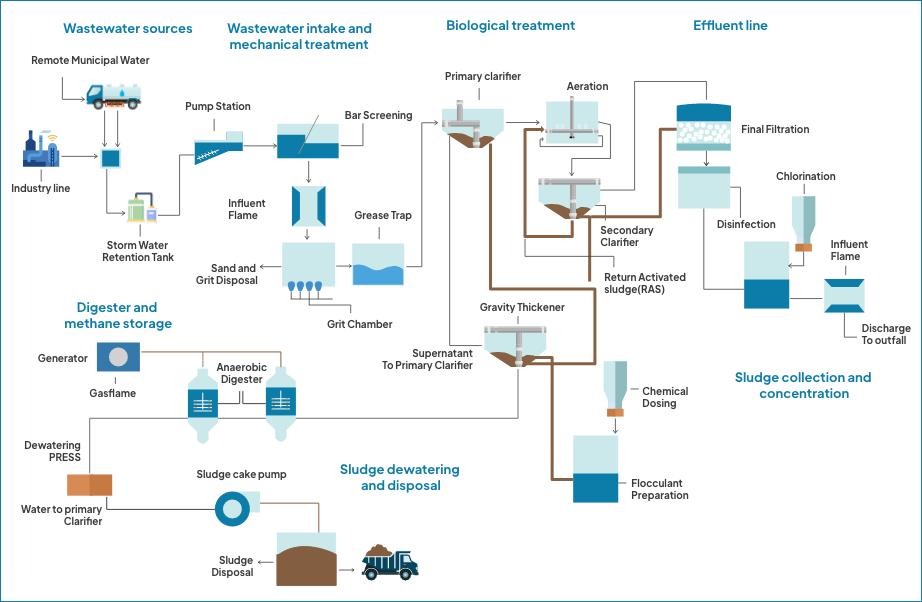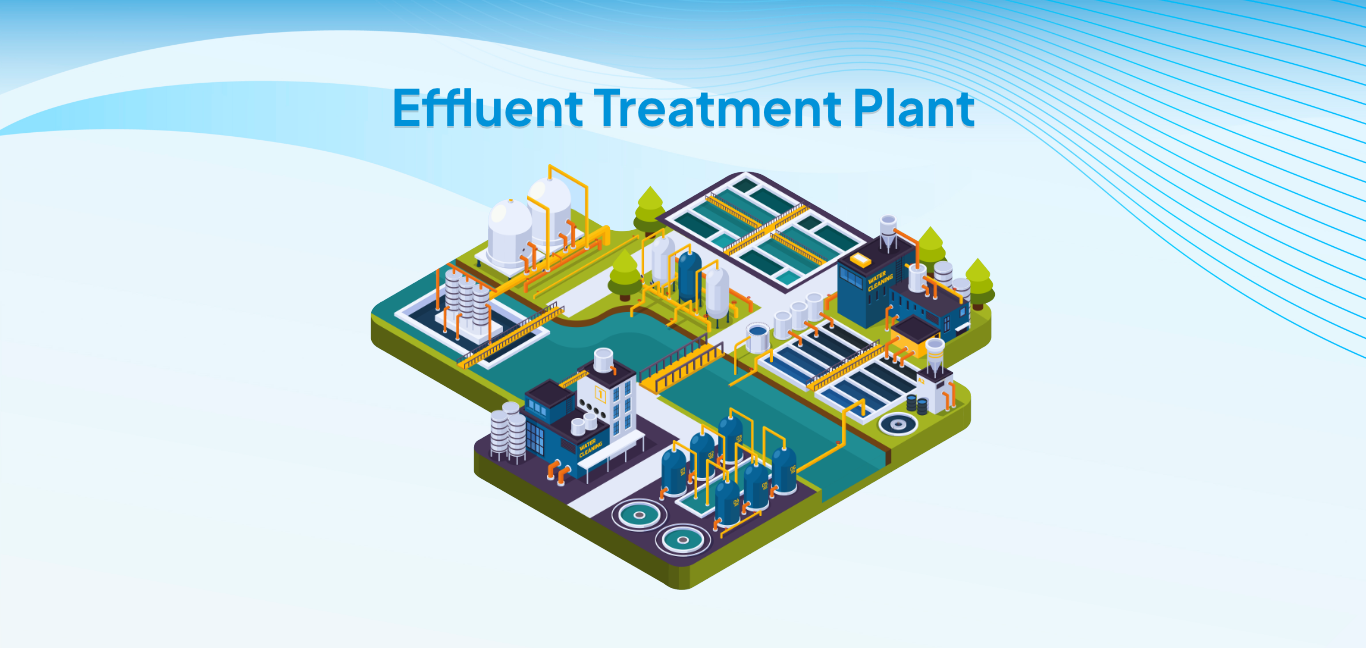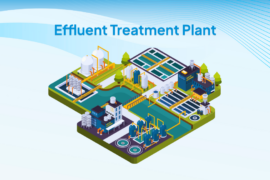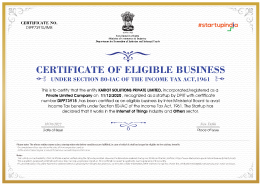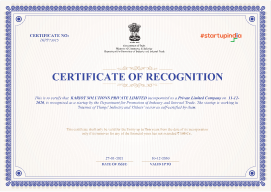Effluent Treatment Plant
Effluent, a broader terminology used for all types of wastewaters including discharge from a wastewater plant. Wastewater is basically a type of water having some dangerous chemicals that can alter the chemical, physical and biological form of natural water and make it unfit for casual usage such as drinking and agriculture purpose (Amoatey & Bani 2011). Effluent Treatment Plant is very useful in today’s ERA
Historical background of wastewater treatment shows that it was initially started due to experiencing adverse impacts of harmful additives on environment and human health. Hence scientists introduced some general techniques through which they became able to treat waste or contaminated water (Rajasulochana & Preethy 2016). The general treatment process mainly consists of following steps.
- Wastewater sources
- Water intake and mechanical treatment
- Biological treatment
- Effluent line
- Sludge collection and concentration
- Digester and methane storage
- Sludge dewatering and disposal
1.1. Wastewater Sources
Generally wastewater can be produced from households, commercial areas, agriculture practices (i.e. due to pesticides or fertilizers), industries (i.e. textile industries, pharmaceutical industries), mining and fossil fuels.
Wastewater from all these mentioned sources is being collected through various transfer modes i.e. carriages or trucks from some remote areas, collection from industries or storm water retention tanks.
The methods help to transfer wastewater to treatment plant where rest of the treatment process is being conducted (Deblonde et al., 2011; Manasa & Mehta 2020). Furthermore effluents from industries that are being processed in effluent treatment plants (ETP) are carried through storm water retention tanks and are also treated on-site.
Karikala Provides Effluent Treatment Plant solution with robust IoT technology
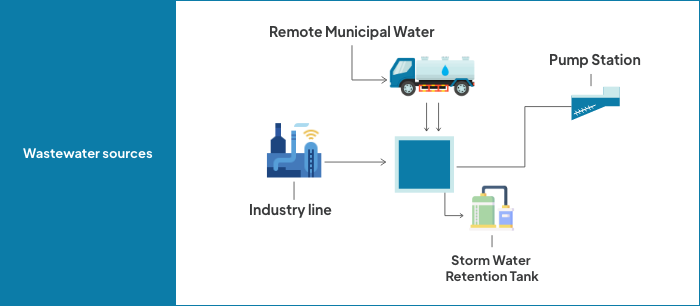
1.2. Water intake and mechanical treatment
The initial step of effluent treatment is mechanical treatment. This mechanical treatment is also known as primary treatment. In this stage wastewater or effluents are pre-treated and prepared to enter in treatment plant by removing all solid objects, sand, silt and other suspended particles. The mechanical treatment is performed with the help of grit chambers, bar screening, grease trap and influent screening. In bar-screening around 3 – 5% of solid objects present in the wastewater (effluents) are screened.
The bars are made up to stainless steel to avoid corrosion and are placed at equal distance of around 3 – 8 mm. At this step, objects of size ranging up to 3 – 8 mm can be crossed depending upon the distance of bars. Grit chambers are designed to remove granular minerals and promote higher sedimentation. It protects pipe or cleaning chambers from sand sedimentation and lowers the activity of extensive cleaning of tanks and digesters.
Moreover in mechanical treatment, the velocity of effluents is reduced to allow higher rate of settling of sand and silt (Zabava et al., 2016). As effluents are composed of various materials including organic, inorganic and physical objects, hence primary treatment is also being designed accordingly. Another treatment process named as grease traps is designed to separate fats, oils and grease (FOG) present in wastewater. Water is than passed through primary clarifier where further settling of remaining suspended particles takes place.
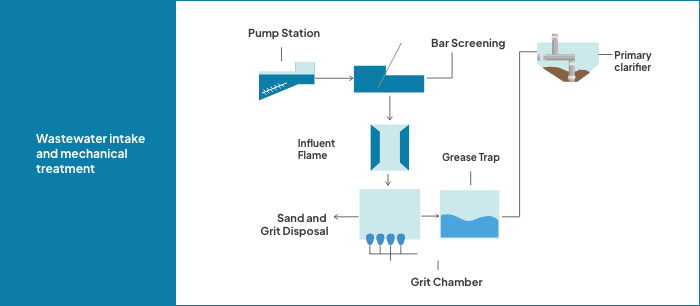
1.3. Biological treatment
Biological treatment is one of the most cost efficient and effective techniques of treating biological as well as chemical material from wastewater. It is also termed as secondary treatment process. In this method wastewater with BOD/COD ratio > 0.5 can be treated efficiently (Meena et al., 2019). Some common biological treatment techniques in ETP are aeration, secondary clarifier and return activated sludge.
Commonly biological treatment is being carried out with the help of bacteria or protozoa to produce activated sludge (Hung et al., 2012; Drewnowski et al., 2019). In the Activated Sludge Plant (ASP) bacteria secrete adhesive substances that cover the smaller particles present in sewage.
The particles stick together and form the flocks of gel-like material (Ahanasazan et al., 2014). Activated sludge is further being treated in two major processes named as aeration basin and secondary clarifier (Wanner & Torregrossa 2017). Aeration basin allows the thorough mixing of air (either surface or in the form of bubbles) to allow growth of microbes which is ultimately responsible for aerobic treatment (Herrmann-Heber et al., 2020). While secondary clarifiers are used for the separation of activated sludge from biologically treated water. So with Effluent Treatment Plant water will get treated and reusable water will be separated
In this step effluents are being separated treated water is being collected with up to 84% treatment of organic influents and suspended solids.
After passing through secondary clarifier return activated sludge (RAS) is than sent back to aeration tank where it can get mixed with effluents being received from primary treatment plant (Van Dijk et al., 2018). During biological treatment flow rate of effluents, pH and temperature are considered as major parameters. If temperature and pH will not kept at their optimum situation it will effect the growth of bacteria and ultimately effects aerobic degradation of effluents (Wanner & Torregrossa 2017).
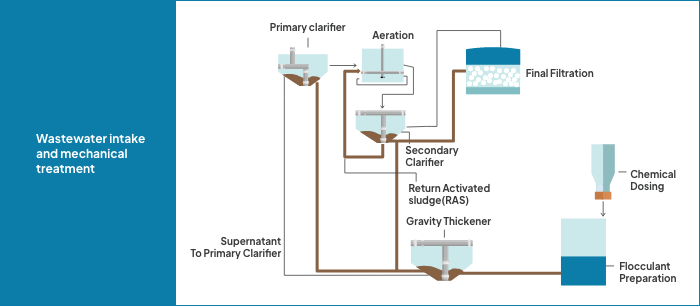
1.4. Effluent line
After passing through secondary clarifier, effluents are transferred into effluent line for disinfection process. Disinfection is generally carried out by the process of chlorination and ozonation. Chlorination is currently one of the most practiced techniques to treat wastewater from industries. In this process biological remains i.e. bacteria from secondary treatment are removed and the treated water is disinfected which can be discharged for commercial usage or into water bodies (Li et al., 2019). Waste water Plant very necessary now a days such as Effluent Treatment Plant
One of the drawbacks of chlorination is production of by-products in the form of halogens that can affect biota present in lakes or river where treated water is being discharged (Kozari et al., 2020).
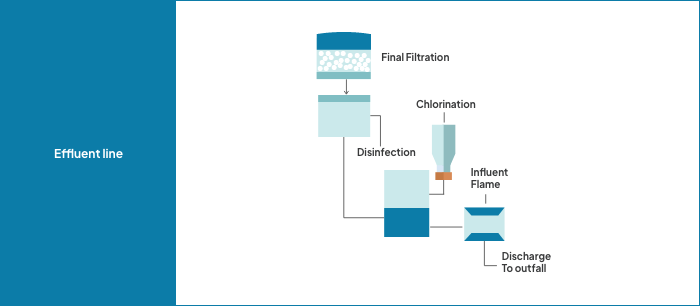
1.5. Sludge collection and concentration
The treated effluents from primary and secondary treatment are present in liquid form with around 60 – 90% of water (Cano et al., 2015).
Sludge thickening is a physical process that is used to treat and condense sludge to make it suitable for processing in digester (Abd El-Shafi et al., 2019). To separate sludge from treated water a gravity thickener is used in which water is kept for at-least 24 hours. The sludge present in effluent water settles down and separated water is sent back to primary clarifier. Gravity thickener commonly works on the principles of fluid dynamics and allows settling of sludge at bottom of device.
Another process known as flocculation is also used in this step. In this process sludge is dewatered by the addition of flocculants. These flocculants can be organic material or inorganic material. In this process the added chemical will make flocs of sludge that will later settle down and can be transported as sludge for further treatment (Wei et al., 2018) flocculation also makes water clearer and is sent to primary clarifier for further treatment.
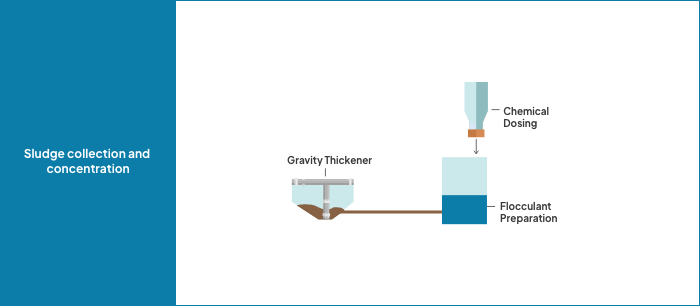
1.6. Digester and methane storage
After passing through primary and secondary treatment sludge is produced which is being thickened as explained in previous section. The resulted thickened sludge is than passed through digester for further treatment. In this step anaerobic digestion is being carried out to stabilize it (Tauber et al., 2019). The digester is basically designed for anaerobic digestion through which organic matter present in sludge is being treated anaerobically.
One of the major advantage of this process is the production of biogas i.e. methane that can be stored and used for production of power and electricity. During anaerobic digestion, anaerobic degradation results in the form of production of methane (CH4) and carbon dioxide (CO2). The process is basically a “waste to energy (WtE) process. In this process normally temperature is kept at 35 ± 1℃ for 15 – 20 days. The production of methane depends upon type of sludge also (Tauber et al., 2019; Arhoun et al., 2019).
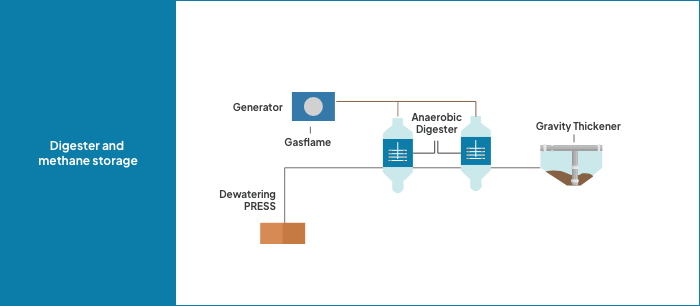
1.7. Sludge dewatering and disposal
The final step of effluent treatment is dewatering of sludge. This process is also termed as physiochemical process due to involvement of both chemical and physical process. As sludge from digesters will contain some water that can make it difficult to be handled, hence dewatering of sludge is being performed through various ways.
Dewatering also helps to reduce amount of sludge which will help in reducing the amount of produced sludge, its transport and dispose-off in landfills.
However treatment of sludge for dewatering can be proved to be a difficult process due to its heterogeneous colloidal system. In this system smaller size particles forms stable suspension which becomes difficult to be separated with the help of merely physical methods such as applying pressure. Hence for this purpose flocculation, coagulation, chemical treatment, thermal and magnetic treatment processes are being practiced. In majority of ETPs dewatering is being performed with the help of chemical process added by high pressure which cumulatively removes all excessive water from sludge and make it ready to be transported and added in landfills (Cao et al., 2021).
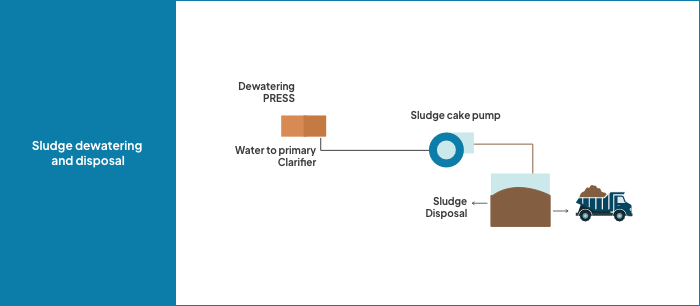
2. IoT Technologies
Currently the monitoring of plant is being done by collecting real-time data of water quality (i.e. concentration of ions) with the help of various kinds of sensors via Internet of things (IoT) platform (Su et al., 2020). The wireless sensors are proved to be highly adopting techniques to monitor an effluent or WWTP. It has ability to improve every kind of system including traditional and current treatment processes by monitoring devices and water quality is being treated (Martínez et al., 2020).
Su et al., (2020) conducted a research based on IoT sensors application on a smart WWTP installed on 1000 – pig farm
The results showed that the removal efficiency of system for biological oxygen demand (BOD) was 93%, for chemical oxygen demand was 89% and for removal of suspended solids (SS) it was found to be 97%.
Hence the IoT sensors have proved to be highly effective water monitoring techniques especially in effluent treatment plants and wastewater treatment plants (Martinez et al. 2020; Zhang et al., 2021).
KarIoT Smart water solution provides multiple types of services in water management – contacts us for more details
